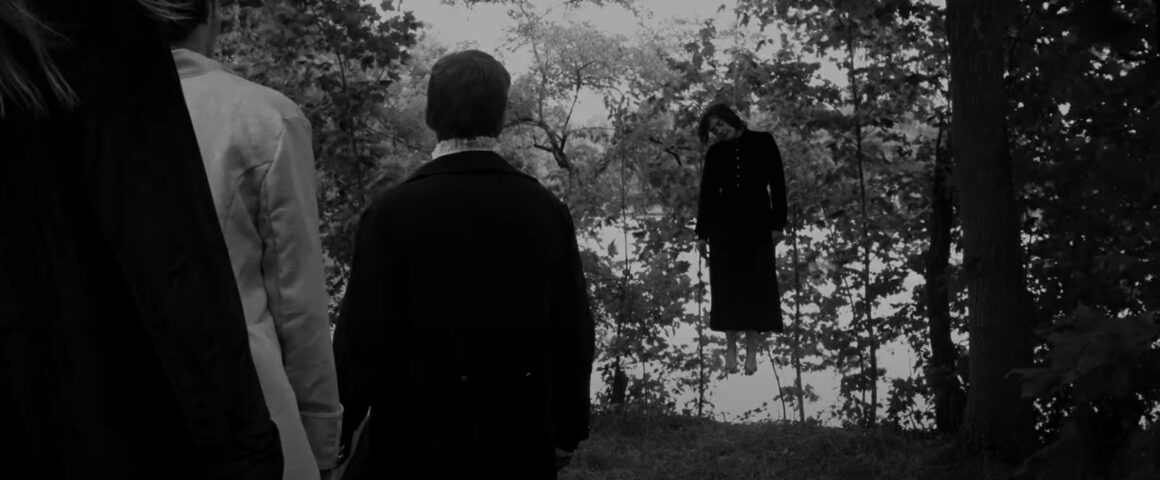In the early 19th century, John Bell arrived in Western Tennessee to settle at the Red River Settlement, accompanied by his wife Lucy and their children. Within a decade, their family became leaders of the community and well-respected in their church. Strangely, however, the family starts hearing strange noises in the night — scratches on their walls, knocks on their door, and what sounds like heavy chains being dragged on the roof and stairs. Despite Bell and his sons dashing outside to catch the perpetrator, they find nothing and no one to blame for the sounds. Gradually, the disturbances increase in frequency and strength, manifesting as the voice of a single spirit that threatens John Bell’s life and as an entity that physically attacks the youngest Bell daughter, Betsy.
Director Seth Breedlove’s (“The Mothman Legacy”) newest documentary The Mark of the Bell Witch traces the history of this local legend, basing its details on the Adams community’s primary text — M.V. Ingram’s The Authenticated History of the Famous Bell Witch — and explanations from various historians, folklorists, and paranormal researchers. Narrated by Lauren Ashley Carter (“The Mind’s Eye”), the film pieces together excerpts from Ingram’s text and conversations with experts with dramatic reenactments of key events. Breedlove’s storytelling style is engaging and well-researched, with legends and interwoven interpretations that cover all the various angles of the story. He focuses on the localized legend, but also on the power of oral tradition and community identity, and how individuals often grow up with local stories, taking on their history as a badge of pride.
The documentary includes modern interpretations as well as more historical theories regarding what might have caused the Bell Witch haunting. Was it a demonic possession of prepubescent Betsy Bell (Amy Davies, “Momo: The Missouri Monster”), the young, innocent daughter of a well-to-do businessman? Perhaps the witch was the angered spirit of a local woman outcast by the community who felt she was wronged by John Bell (Thomas Koosed)? Were these terrors the aftermath of young Drewry Bell’s (Grayden Nance, “Momo: The Missouri Monster”) disturbance of a nearby Native American burial site? Breedlove’s organization takes us through one theory after another, and his researchers and experts share their thoughts, their experiences, and their opinions about what could have been at work in what is now Adams, TN. No stone is left unturned, though, unfortunately, no concrete answers have ever been determined.
The tale has been adapted into films, including, most notably, 2005’s “An American Haunting,” but this documentary leaves out the sensationalized dramatizations, sticking to conversations with the experts — the foundations of classic oral tradition. When he does choose to include reenactments, Breedlove’s characters and sets are simple, to-the-point, and focused more on the voiceover narrations than the visuals. No outlandish or cheesy Hollywood CGI special effects tarnish the retelling of the Bell Witch and her historical torment of a quiet, esteemed family.
Fans of true hauntings will appreciate the direct nature of The Mark of the Bell Witch, and Breedlove’s careful research brings to light the many dark corners in this chapter of American folklore. Hopefully, like the spirit itself (portrayed by Seth’s wife Adrienne), this documentary will gain in strength as more and more people become aware of it, talk about it, and share it with others.



